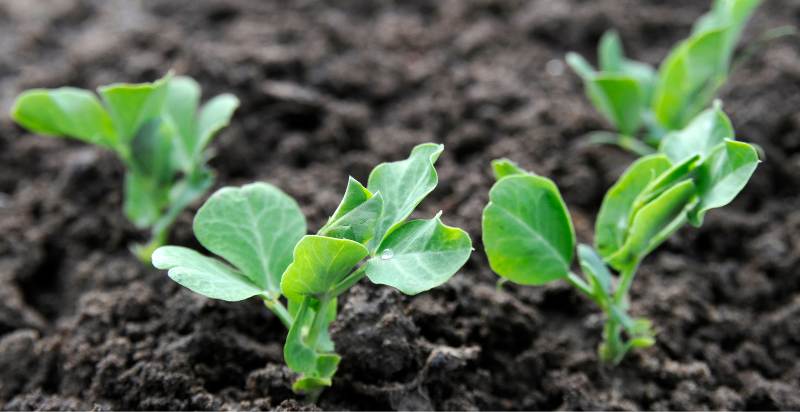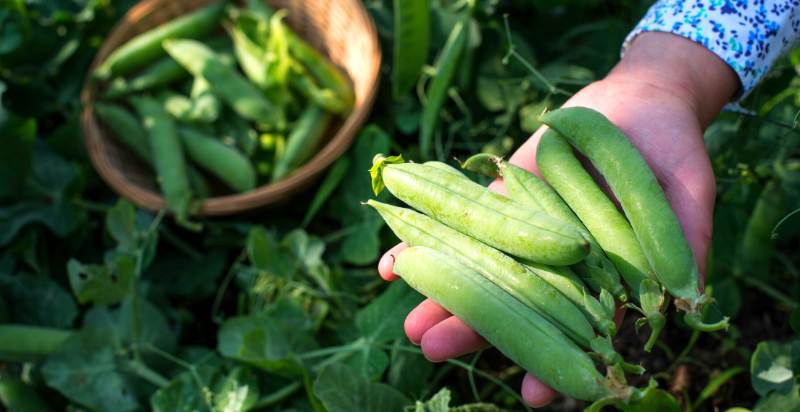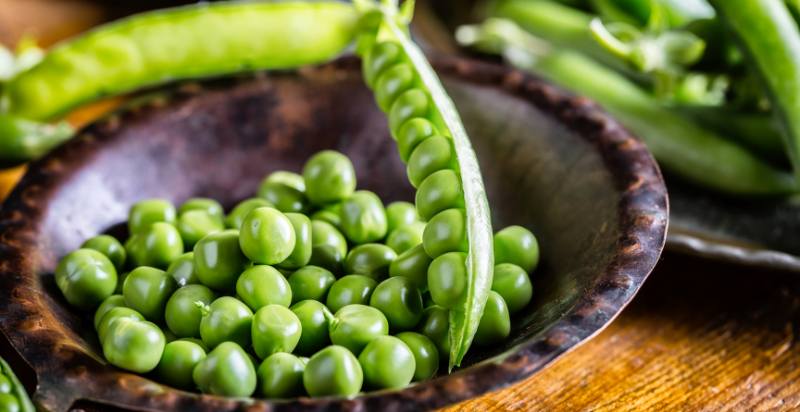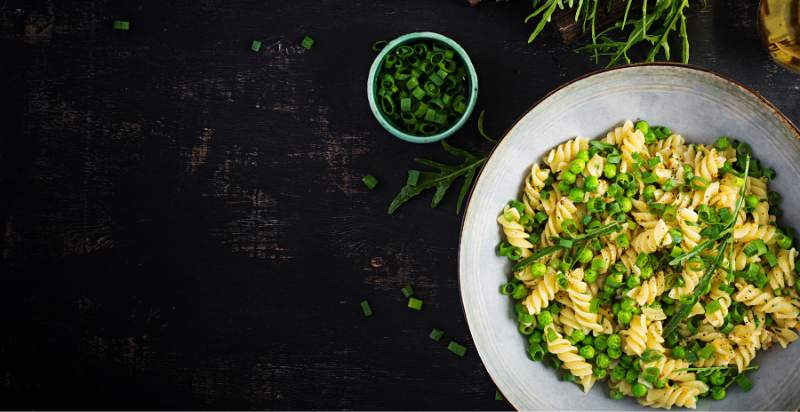Peas are a type of legume similar to beans and lentils. They are small, round green seed pods that can be eaten fresh or dried in soups, stews, and other dishes. Peas have been a part of human diets since ancient times, with archaeological evidence suggesting they were cultivated as early as 10,000 BC. Here is everything you wanted to know about Peas.
What are Peas?
Peas are high in protein and dietary fiber, as well as being a good source of vitamins A, B1 (thiamine), B2 (riboflavin), B3 (niacin), C, K, folate, and minerals like phosphorus, magnesium, zinc, and iron. They are also rich in antioxidants, which can help protect against cancer and heart disease.
History and Origin of Peas:
Peas have been a part of human diets since ancient times. Archaeological evidence suggests they were cultivated in the Middle East as early as 10,000 BC. From there, they spread across the continent and were eventually introduced to Europe in the 16th century.
Types of Peas:
Peas come in many varieties: garden peas (also known as English or green peas), snow peas, sugar snap peas, and split peas. All peas are high in protein, fiber, and other essential vitamins and minerals.
Nutrition of Peas:
Peas are an excellent source of protein, fiber, vitamins, minerals, and antioxidants. They are also a good source of complex carbohydrates and beneficial compounds such as phytosterols, saponins, and polyphenols. All these nutrients work together to help promote health and reduce the risk of chronic diseases.
Health Benefits of Peas:
Peas can provide a variety of health benefits, including:
- Improved digestive health – Peas are high in fiber, which can help keep the digestive system functioning properly and prevent constipation and other issues.
- Weight management – The protein, fiber, and carbohydrates in peas can help reduce appetite and make you feel full for longer periods. This can benefit those trying to lose weight or maintain a healthy weight.
- Heart health – Peas are rich in dietary nitrates, which may help lower blood pressure levels and reduce the risk of heart disease. They are also a good source of magnesium, which helps regulate blood pressure levels.
- Bone health – Peas are a good source of calcium, phosphorus, and vitamin K, which all help keep bones strong and healthy.
- Blood sugar control – The fiber in peas can help slow down the absorption of glucose, which can be beneficial for those with diabetes.
How to Plant Peas?
Peas are nutritious vegetables that can easily be grown in your garden. Growing peas is quite easy and requires minimal effort. If you know how to plant peas correctly, you can enjoy a delicious crop of juicy green pods to add to your salads or cook into soups and stews. Here is everything you need to know about how to plant peas.
Site Selection:
When selecting a site for planting your pea crop, choose an area with well-drained soil that gets plenty of sunlight. Peas need at least 6 hours of direct sunlight daily to produce the best yields. Avoid areas with poor drainage, as this may lead to soggy roots and rotting plants.
Soil Preparation:
Before planting your peas, prepare the soil by loosening it up with a rake and adding some compost or aged manure. This will help to improve drainage and provide nutrients to help your plants grow.
Seed Selection:
When selecting seeds for planting, look for pest-resistant varieties that are well-suited to your climate. Choose a variety of peas that will mature quickly so you can harvest them before the summer heat sets in.
Planting:
Peas should be planted as soon as the soil can be worked in the spring, usually two weeks before the last frost date. Plant the seeds 1–2 inches (2.5–5 cm) deep into moist soil and about three inches (7.6 cm) apart from each other in rows or hills about 2 feet (60 cm) apart. If planting more than one row, stagger the rows, so the plants get plenty of sunlight.

How to Care for Peas after harvest?
Once your peas are harvested, you must take care of them to ensure they stay fresh. Peas should be stored in a cool place away from direct sunlight. If you plan on storing them for more than a few days, they should be placed in the refrigerator or sealed in an airtight container and frozen. When thawing out frozen peas, make sure to cook them immediately after thawing for the best results.
Peas can also be preserved by drying or canning them. Dried peas can last up to one year if stored properly, while canned peas can last up to two years when kept in a cool, dry place.
Following these steps, you can enjoy delicious, fresh-tasting peas for months. With a little effort, you can have fresh vegetables available year-round. Enjoy the fruits of your harvest!

Preventions From Pests and Diseases:
It is important to practice good garden hygiene to prevent your pea crop from being attacked by pests or diseases. This includes rotating crops and removing any dead or diseased plants from the area. Additionally, water your peas early in the morning, so they have plenty of time to dry off before nightfall.
In areas with high humidity, you may need to use fungicides or other treatments to protect your crop and keep it healthy. By following these steps and taking care of your plants regularly, you can enjoy a bountiful harvest of sweet peas each year.
Using organic methods such as companion planting with certain herbs like mint and marigold, you can further discourage pests and diseases without using chemical pesticides or fungicides.
You can easily enjoy a delicious and nutritious crop of peas each year with proper care. With minimal effort, fresh vegetables are available throughout the summer months. Take the time to learn how to plant and take care of your peas properly, and soon you’ll be enjoying their sweet flavor and juicy texture.

How to Harvest Pea Crops?
When the pods are ripe, it’s time to harvest your pea crop. Pods should be harvested when they are still young and tender, and the peas inside should have a bright green color. Peas can either be shelled individually, or you can pick whole pods off the plants. Once picked, enjoy them immediately or store them in the refrigerator for up to a week.
To preserve your pea crop, you can also dry or can them. To dry peas, spread the pods on screens in a cool area with good air circulation until they are completely dry (about two weeks). Then store them in an airtight container away from direct sunlight and moisture. For canned peas, process according to the instructions on the canning jar.

How to Store Homegrown Pea Crops?
Homegrown peas should be stored in a cool place away from direct sunlight. If you plan on storing them for more than a few days, they should be placed in the refrigerator or sealed in an airtight container and frozen. When thawing out frozen peas, make sure to cook them immediately after thawing for the best results.
Preserve your pea crop by drying or canning them if desired. Dried peas can last up to one year if stored properly, while canned peas can last up to two years when kept in a cool, dry place.
Following these steps, you can enjoy delicious, fresh-tasting peas for months. With a little effort, you can have fresh vegetables available year-round.

How to Use Peas?
Peas are versatile foods that can be cooked in various ways. First, shell the peas by removing the pods from the plant to cook fresh peas. Then rinse and drain them before adding them to boiling salted water. Simmer for 3-5 minutes until tender, then drain and season as desired. Peas can also be steamed, microwaved, or cooked in a stir-fry.
Dried peas can also be cooked by soaking them overnight and then boiling them in salted water until tender. Once cooked, add to soups, casseroles, and salads to boost flavor and nutrition. Peas can also be frozen to preserve their freshness and extend the product’s shelf life.

Potential Risks from Peas:
Peas are a safe and nutritious food when grown and eaten in moderation. However, there is one potential risk to consider: raw peas may contain bacteria that can cause food poisoning if not handled or cooked properly. To reduce the risk of contamination, always cook peas before eating them.
Additionally, discard any pods showing mold or discoloration and avoid eating any with a bitter taste. Peas should also be stored in the refrigerator after harvested and used within two days for best results. Proper handling and storage allow you to enjoy this delicious vegetable without worry.
Following these tips, you can enjoy sweet-tasting home-grown peas all summer! A little effort goes a long way regarding the harvesting and taking care of your pea crop. Start your vegetable garden today and reap the rewards!
Conclusion:
Peas are a great addition to any garden because they are easy to grow, nutritious, and delicious. With proper planting and maintenance, you can maintain a healthy crop that will provide you with tasty vegetables all season long. Avoid using chemical pesticides or fungicides to keep your peas safe for consumption. Harvest them when they are young and tender, store them properly, and enjoy their fresh flavor all summer.
By growing and caring for your pea crop, you can enjoy fresh-tasting vegetables all summer long! Start your vegetable garden today and reap the rewards of eating home-grown produce. With a little effort, you can create a bounty of sweet-tasting peas that will last throughout the season. Enjoy!
- Everything You Wanted to Know About Red Tamarillos - June 2, 2025
- A Guide to Tulips: Everything You Need to Know & More… - June 2, 2025
- Guanabana: Description, Flavor, Benefits, And Uses - May 27, 2025

9 thoughts on “What are Peas? How to Plant, Grow, and Harvest Peas”
Comments are closed.